
Parallelogram
Tangrams, invented by the Chinese, are used to develop geometric thinking and spatial sense. Seven figures…

Parallelogram
Tangrams, invented by the Chinese, are used to develop geometric thinking and spatial sense. Seven figures…

Parallelogram
Tangrams, invented by the Chinese, are used to develop geometric thinking and spatial sense. Seven figures…

Parallelogram
Tangrams, invented by the Chinese, are used to develop geometric thinking and spatial sense. Seven figures…

Altitude and Diagonal of a Parallelogram
Illustration of a parallelogram with altitude and diagonal drawn.
Area of a Parallelogram
Illustration of parallelogram AEFC drawn two different ways with base b and altitude/height a used to…
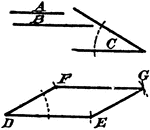
Construction Of A Parallelogram
An illustration showing the construction used to erect a parallelogram given two sides and an angle.…
Parallelogram Used to Construct Equivalent Square
Illustration of a how to construct a square equivalent to a given parallelogram.

Parallelogram With Diagonals Bisecting Each Other
Illustration of a parallelogram with diagonals drawn to show they bisect each other.

Parallelogram With Dimensions
Parallelogram with dimensions labeled. Parallelogram can be used to calculate area.

Parallelogram With Dimensions
Parallelogram with dimensions labeled. Parallelogram can be used to calculate area.

Parallelogram With Lines From opposite Vertices to Midpoints
Illustration to show that when lines from two opposite vertices of a parallelogram to the midpoints…

Parallelogram and Rectangle Relationship
Parallelogram with dimensions drawn to show relationship to the area of a rectangle.
2 Equal Parallelograms
Illustration used to prove the theorem "Two parallelograms are equal if two sides and the included angle…
Equal Parallelograms
Illustration of a two equal parallelograms. Two parallelograms are equal, if two sides and the included…
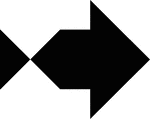
Parrot Fish
Tangrams, invented by the Chinese, are used to develop geometric thinking and spatial sense. Seven figures…
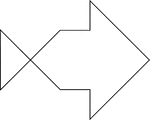
Parrot Fish
Tangrams, invented by the Chinese, are used to develop geometric thinking and spatial sense. Seven figures…
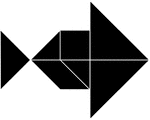
Parrot Fish
Tangrams, invented by the Chinese, are used to develop geometric thinking and spatial sense. Seven figures…

Parrot Fish
Tangrams, invented by the Chinese, are used to develop geometric thinking and spatial sense. Seven figures…
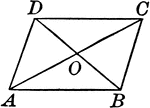
Quadrilateral With Diagonals
Illustration to show that if the diagonals of a quadrilateral bisect each other, the figure is a parallelogram.
Quadrilaterals With Lines Joining Midpoints
Illustrations to show quadrilaterals with lines joining the midpoints of the sides of any quadrilateral,…
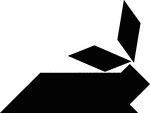
Rabbit Lieing Down
Tangrams, invented by the Chinese, are used to develop geometric thinking and spatial sense. Seven figures…
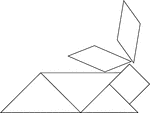
Rabbit Lieing Down
Tangrams, invented by the Chinese, are used to develop geometric thinking and spatial sense. Seven figures…
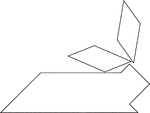
Rabbit Lying Down
Tangrams, invented by the Chinese, are used to develop geometric thinking and spatial sense. Seven figures…
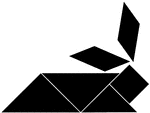
Rabbit Lying Down
Tangrams, invented by the Chinese, are used to develop geometric thinking and spatial sense. Seven figures…

Rabbit Siting on Its Hind Legs
Tangrams, invented by the Chinese, are used to develop geometric thinking and spatial sense. Seven figures…

Rabbit Siting on Its Hind Legs
Tangrams, invented by the Chinese, are used to develop geometric thinking and spatial sense. Seven figures…

Rabbit Siting on Its Hind Legs
Tangrams, invented by the Chinese, are used to develop geometric thinking and spatial sense. Seven figures…

Rabbit Siting on Its Hind Legs
Tangrams, invented by the Chinese, are used to develop geometric thinking and spatial sense. Seven figures…
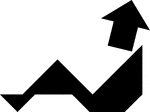
Reclining Man Facing Left
Tangrams, invented by the Chinese, are used to develop geometric thinking and spatial sense. Seven figures…

Reclining Man Facing Left
Tangrams, invented by the Chinese, are used to develop geometric thinking and spatial sense. Seven figures…

Reclining Man Facing Left
Tangrams, invented by the Chinese, are used to develop geometric thinking and spatial sense. Seven figures…

Reclining Man Facing Left
Tangrams, invented by the Chinese, are used to develop geometric thinking and spatial sense. Seven figures…
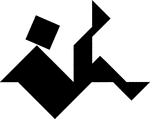
Reclining Man Facing Right
Tangrams, invented by the Chinese, are used to develop geometric thinking and spatial sense. Seven figures…
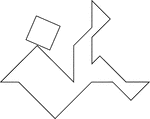
Reclining Man Facing Right
Tangrams, invented by the Chinese, are used to develop geometric thinking and spatial sense. Seven figures…

Reclining Man Facing Right
Tangrams, invented by the Chinese, are used to develop geometric thinking and spatial sense. Seven figures…
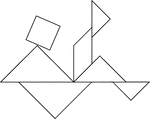
Reclining Man Facing Right
Tangrams, invented by the Chinese, are used to develop geometric thinking and spatial sense. Seven figures…

Rectangle
Tangrams, invented by the Chinese, are used to develop geometric thinking and spatial sense. Seven figures…

Rectangle
Tangrams, invented by the Chinese, are used to develop geometric thinking and spatial sense. Seven figures…

Rectangle
Tangrams, invented by the Chinese, are used to develop geometric thinking and spatial sense. Seven figures…

Rectangle
Tangrams, invented by the Chinese, are used to develop geometric thinking and spatial sense. Seven figures…

Rectangle With Diagonals
Illustration to show that if the diagonals of a parallelogram are equal, the figure is a rectangle.

Rhombus
Tangrams, invented by the Chinese, are used to develop geometric thinking and spatial sense. Seven figures…

Rhombus
Tangrams, invented by the Chinese, are used to develop geometric thinking and spatial sense. Seven figures…

Rhombus
Tangrams, invented by the Chinese, are used to develop geometric thinking and spatial sense. Seven figures…

Rhombus
Tangrams, invented by the Chinese, are used to develop geometric thinking and spatial sense. Seven figures…

Right Triangle
Tangrams, invented by the Chinese, are used to develop geometric thinking and spatial sense. Seven figures…

Right Triangle
Tangrams, invented by the Chinese, are used to develop geometric thinking and spatial sense. Seven figures…

Right Triangle
Tangrams, invented by the Chinese, are used to develop geometric thinking and spatial sense. Seven figures…

Right Triangle
Tangrams, invented by the Chinese, are used to develop geometric thinking and spatial sense. Seven figures…
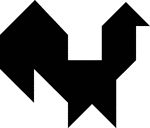
Rooster
Tangrams, invented by the Chinese, are used to develop geometric thinking and spatial sense. Seven figures…

Rooster
Tangrams, invented by the Chinese, are used to develop geometric thinking and spatial sense. Seven figures…
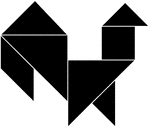
Rooster
Tangrams, invented by the Chinese, are used to develop geometric thinking and spatial sense. Seven figures…






